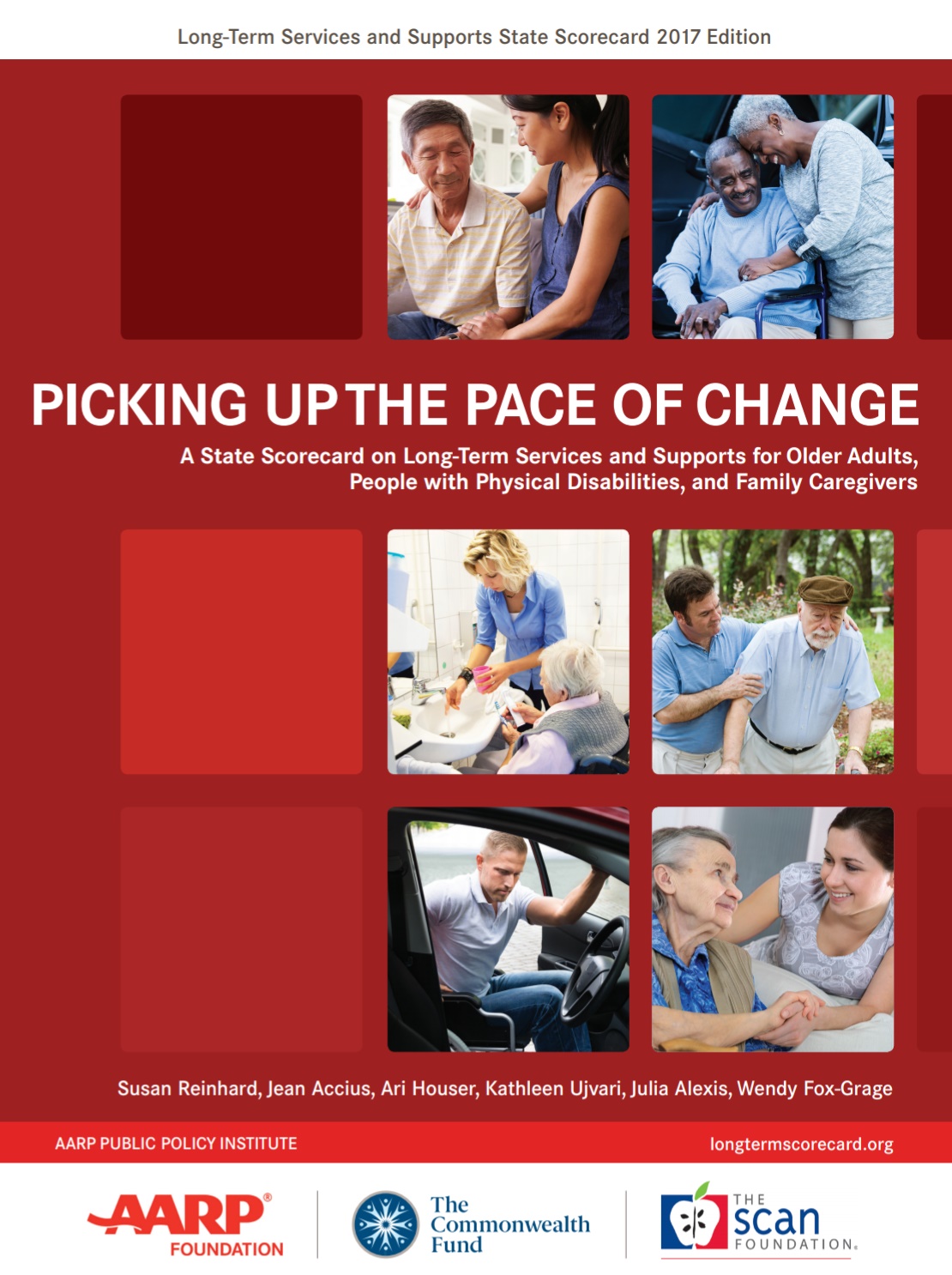AARP Hearing Center
The Long-Term Services and Supports State Scorecard, One Year In: Keep ‘Picking Up the Pace.’
By Susan Reinhard, June 28, 2018 01:55 PM

It’s hard to believe a year has passed since the AARP Public Policy Institute (PPI) released its third Long-Term Services and Supports State Scorecard. The interactive tool measures state performance for creating a high-quality system of care and improving services for older adults and people with physical disabilities, as well as their family caregivers. It encompasses everything from the availability of home and community-based services to access to transportation within a community.
To understand the breadth and power of the Scorecard, you have to use it, so I encourage you to do so. Why such a dynamic tool? Look no further than the theme and title of the 2017 report: Picking Up the Pace of Change. Approximately 10,000 people in the United States turn 65 every day, and half of those will one day need help with basic daily activities like walking, eating, getting out of bed in the morning, and bathing. If we are to meet the long-term services and supports (LTSS) needs of our aging population—and empower people with the freedom to live as independently as they choose—we need to get to work and pick up the pace in strengthening our LTSS systems.
That’s where the Scorecard comes in. The Scorecard report found that while some states are in a better place than when we published previous Scorecards (2011 and 2014), all states have a ways to go. The interactive Scorecard tool provides states with instant feedback highlighting for them areas in need of improvement. It also provides a baseline from which states can measure future improvement.
So while released a year ago, the latest Scorecard is a living resource that users can continually go back to—referencing it, finding new information as they need it, and even tapping freshly released, hands-on tools they can use to achieve their goals. The one-year anniversary of the Scorecard is a time to pause and look at both state progress and even the Scorecard itself as a living, still-expanding tool
Real Impact on the Ground
In just the last 12 months, we’ve seen states use the Scorecard as the action tool it is. In California, I presented Scorecard results to the state’s Future Health Workforce Commission, where I focused on nurse “scope of practice” issues and the need to allow Advanced Practice Registered Nurses to practice to the full extent of their education and training. Commissioners later used the Scorecard to make the case for change in California.
In North Dakota, a statewide collaborative is using the Scorecard to understand how the state can improve its score and better support family caregivers. In addition, Indiana’s Director of the Division of Aging relies on the Scorecard during budget discussions with state legislators as well as to discuss with stakeholders state decisions related to its home and community-based services transition plan. In the Northwest, meanwhile, Governor Jay Inslee and his administration released a publication on long-term care activity in the state that relies heavily on the Scorecard’s unique content and cites the state’s No. 1 ranking.
The list goes on. In Pennsylvania last December, the state House passed a bill to make it less cumbersome for people to receive home care when applying for Medicaid. To convey the importance of the legislation, advocates cited high-performing family caregiving states as reported by the Scorecard. And in Wisconsin, the state Department of Health Services, inspired by the Scorecard, created its Wisconsin Long-Term Care Scorecard Report: 2013-2015—modeled after AARP’s landmark resource.
There are other examples, and the number of states reporting such anecdotal evidence keeps growing.
Expanding Tool
Meanwhile, in the last year we’ve kept building on the tool itself. We’ve strengthened the website, longtermscorecard.org, to make it as accessible as possible. That’s important because the tool is meant for all, from decision makers crafting policy, to private companies developing aging-related solutions, to individuals wanting to effect change or seek information for themselves or loved ones.
Building off the Scorecard release, we’ve “picked up the pace” ourselves. To help accelerate improvement, we’ve released a series of Promising Practices reports that provide real-world emerging solutions in various LTSS topic areas. Each report comes complete with resources, such as contact information for key people implementing the solutions, so that states don’t have to start from scratch.
Another way PPI has helped states explore and implement services is by producing a series of impact videos that highlight solutions to the problems many states face. One features a Minnesota program for home and community-based services. (In a coming blog post, I’ll discuss the most recent video release, which covers the all-important CARE Act.)
As it has done for the last year, PPI also continues to organize Scorecard-driven events. Our latest endeavor: We are kicking off a series of forums in different parts of the country, with the first one taking place in Chicago this week.
We urge you to keep beating the LTSS “pick up the pace” drum. Participate in events, go to the longtermscorecard.org often, and use the information to strengthen our LTSS systems. And if you develop a promising solution, let us know so we can help the idea spread.































































